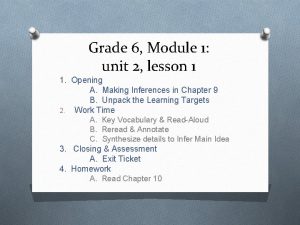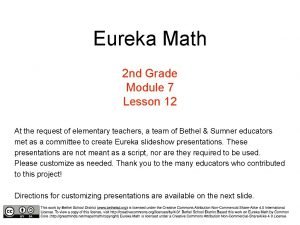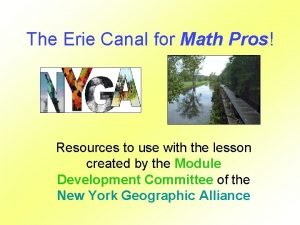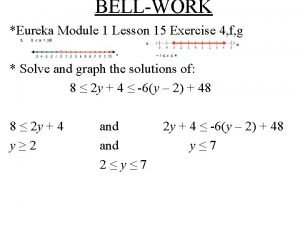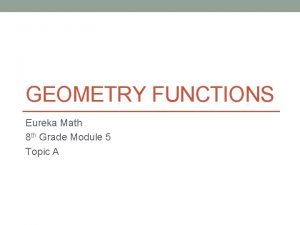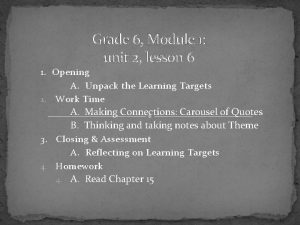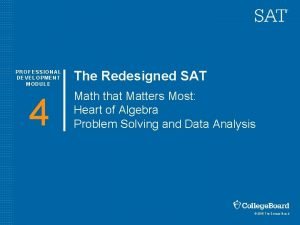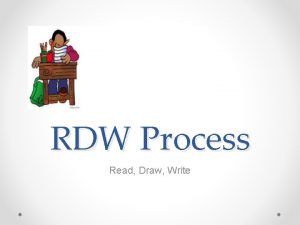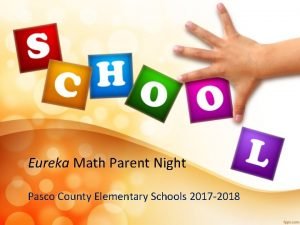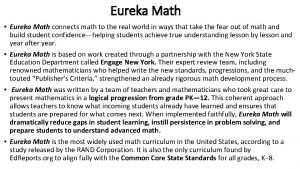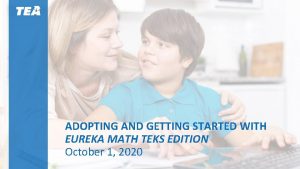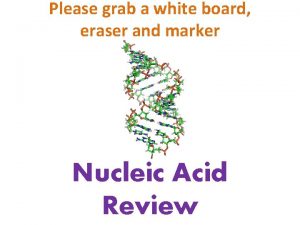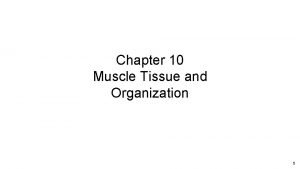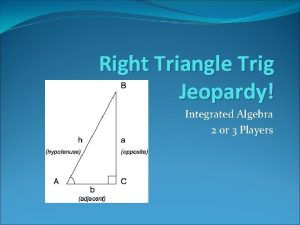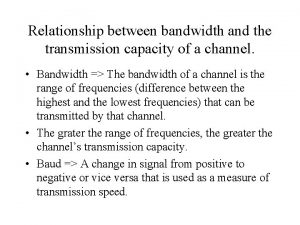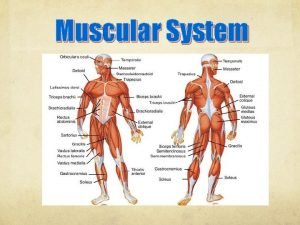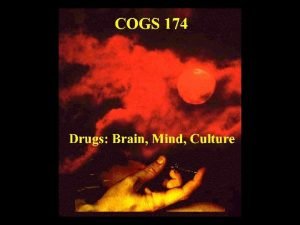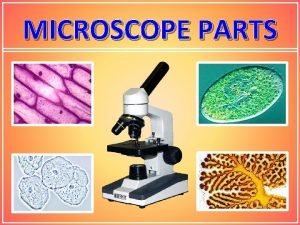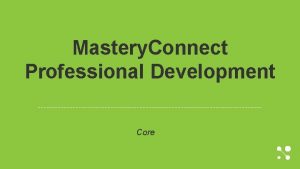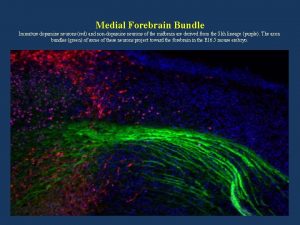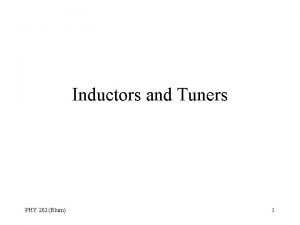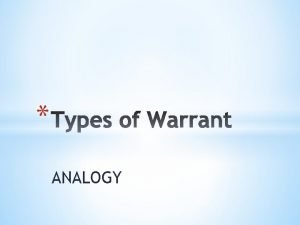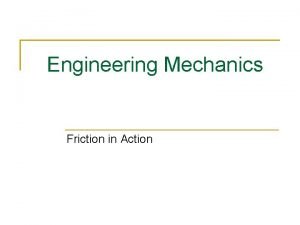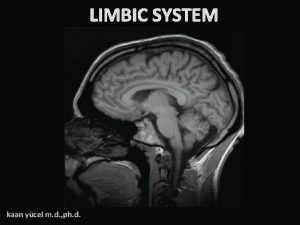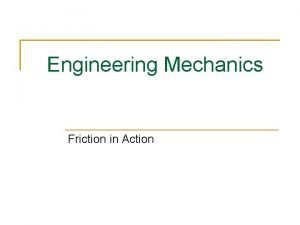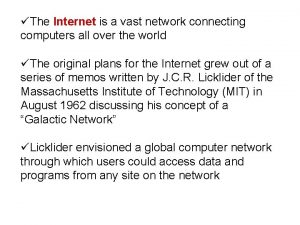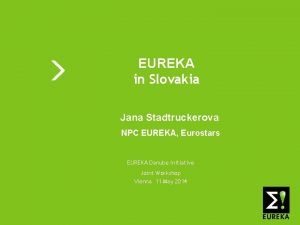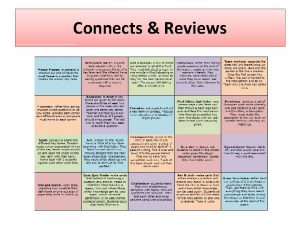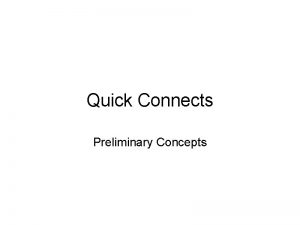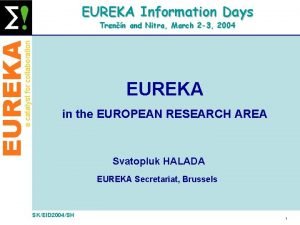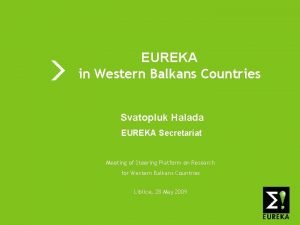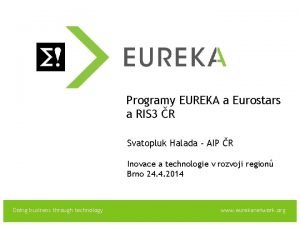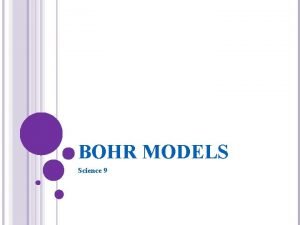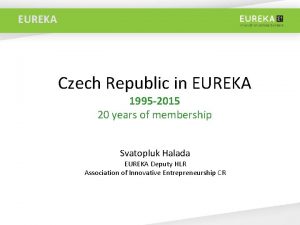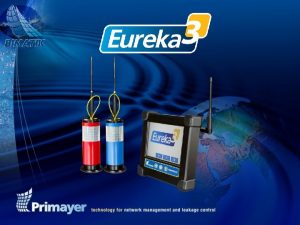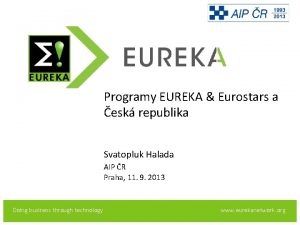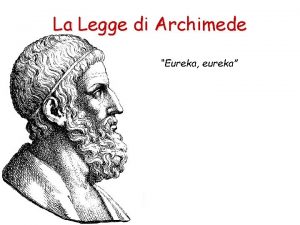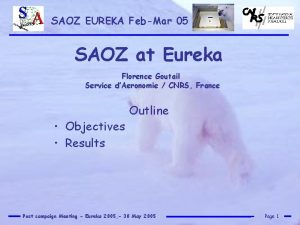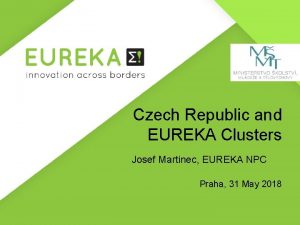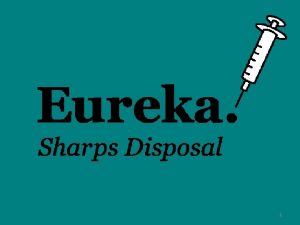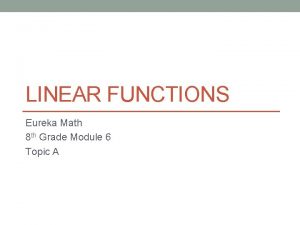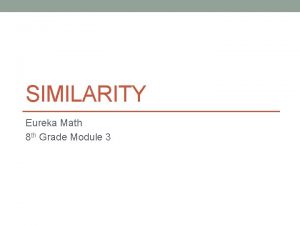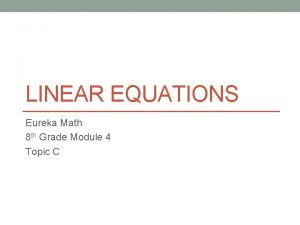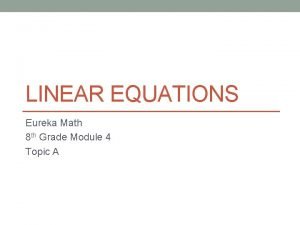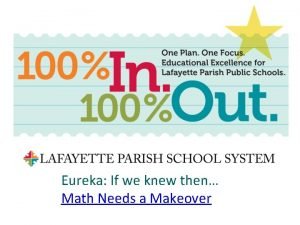Eureka Math Eureka Math connects math to the




























- Slides: 28

Eureka Math • Eureka Math connects math to the real world in ways that take the fear out of math and build student confidence—helping students achieve true understanding lesson by lesson and year after year. • Eureka Math is based on work created through a partnership with the New York State Education Department called Engage New York. Their expert review team, including renowned mathematicians who helped write the new standards, progressions, and the muchtouted “Publisher’s Criteria, ” strengthened an already rigorous math development process. • Eureka Math was written by a team of teachers and mathematicians who took great care to present mathematics in a logical progression from grade PK— 12. This coherent approach allows teachers to know what incoming students already have learned and ensures that students are prepared for what comes next. When implemented faithfully, Eureka Math will dramatically reduce gaps in student learning, instill persistence in problem solving, and prepare students to understand advanced math. • Eureka Math is the most widely used math curriculum in the United States, according to a study released by the RAND Corporation. It is also the only curriculum found by Ed. Reports. org to align fully with the Common Core State Standards for all grades, K– 8.

Current Implementation • Eureka was initially brought in during the 2014 school year for implementation K – 8. Each grade implemented one Eureka Math unit. Typically the unit was from the grade level below where implementation occurred due to the rigor of the program. Now all elementary math classes are Eureka based. • In 2015, Rundlett Middle School began implementation of Eureka in all grade levels. • This year, the 8 th grade algebra course is rolling out two Eureka Units in addition to the regular Algebra program. • Next year, full implementation of Eureka, including the Algebra 1 course, will be Eureka Math based. • To fully implement this program, we are literally providing 4 years of math instruction in three years for students who are “ready” to access algebra in 8 th grade. This is consistent with the Eureka Model. • Some students are taking an accelerated math option in grade 7. We have two 30 minute periods per week to cover 2 additional Eureka units. Additional support is available before and after school. • Next year, the Algebra program will be full Eureka Math. Students will have an additional 30 minute block of math instruction if they are “ready” for Algebra in 8 th grade.

Recommendation for the next “level” of Math End of Grade 6 ØAcademic Score / Grade in standards performance of 3 or 4 End of Grade 7 ØAcademic Score / Grade in standards performance of 3 or 4 ØModule Summative Scores of 3 or 4 ØMath PACE Assessment Score ØFull Year, grade level Summative Assessment score of 3 or 4 Parents have the right to decide placement over teacher recommendation

NH is typically in the top 5 nationally in scoring in math. RMS outperforms the state average on standardized tests.

New Hampshire COLLEGE and CAREER READY MIDDLE SCHOOL COMPETENCIES for MATH FOR ALL BLUE DUKE STUDENTS

Competency 1: Students will reason abstractly and manipulate symbolic expressions to represent relationships and interpret expressions and equations in terms of the a given context for determining an unknown value. Standards • I can symbolically represent relationships involving rational and irrational numbers. • I can interpret and apply the use of varied symbols in mathematical relationships, formulas, expressions and operations. • I can provide mathematical justification when evaluating expressions and modeling linear equations.

Competency 2. Students will expand their understanding of the number systems, think flexibly and attending to precision and reasonableness when solving problems using rational and irrational numbers. Standards ØI can justify how place value and multiple representations can be used to estimate and compare. ØI can use positive and negative exponents to express quantities and relationships in problem solving.

Competency 3. Students will expand the use of computational strategies, algorithms, and proportional reasoning to rational and irrational numbers. Standards ØI can perform operations fluently with rational numbers. ØI can generate equivalence of indicated division and fractional parts. ØI can apply properties and inverse operations to solve and justify solutions. ØI can generate and evaluate the appropriateness of operations to solve and justify solutions. ØI can determine and explain my reasoning for an approach on a given situation.

Competency 4. Students will use reasoning and metacognitive skills thru making conjectures, justifying and communicating mathematical solutions and arguments Standards ØI can use informal and rule-based arguments to support the reasonableness of a solution. (6) ØI can use stated assumptions, definitions, patterns or previously established results to support the reasonableness of solution arguments. (7/8) ØI can make, test, evaluate and justify conjectures using mathematical concepts and models.

Competency 5. Students will strategically use tools and apply (proportional reasoning 7/8) precision to solve measurement problems in (pure / theoretical 7/8) authentic, applied contexts. ØI can make and justify estimates and conversions within the measurement system. ØI can compare measurement attributes, measures and models, and select the appropriate customary or metric units of measure and formula for a given task. (ex. volume or surface area 6 th. Scale drawing, similar figures, distance between two points, 7/8. )

Competency 6. Students will make use of structure to describe and compare situations that involve proportionality, change or patterns and use the information to make conjectures and justify conclusions / solutions. ØI can model contextual situations using multiple representations. ØI can calculate constant rates of change in authentic situations. ØI can interpret, analyze, and generalize a variety of mathematical patterns, relations, or explicit and recursive functions.

Competency 7. Students will solve problems involving reasoning using properties of 2 and 3 dimensional shapes and analyze, represent and model geometric relationships in (pure / theoretical 7/8) authentic applied contexts. ØI can solve problems and justify solutions using geometrical relationships, properties and formulas. ØI can decompose figures into new figures and construct (geometric 7/8 th) figures with given conditions. ØI can represent authentic situations using coordinate graphing and diagrams (6 th). ØI can demonstrate transformations using multiple contexts (7/8 th).

Competency 8. Students will design investigations and gather data (and conduct probability experiments; 7/8 th) involving populations ØI can formulate questions, gather data and build representations to support and / or refute my conclusions. ØI can compare populations by analyzing distributions in terms of variability and measures of central tendency (and interquartile ranges and outliers 7/8 th). ØI can generate random samples to characterize variability in estimates and predictions about a population (7/8 th). ØI can build analyze models representing the association between two variables (7/8 th).


7 th Grade Enrichment Math December 2017

Why Enrichment Math in 7 th grade? ● Give students the option for 8 th Grade Algebra ● Grade 7 and 8 math programs very rigorous ● Ensure students have no gaps, cover all grade level standards ● Prepare students for Eureka Algebra curriculum ● Extra challenge for motivated student seeking rigor!

RMS Math Curriculum 6 th Grade Eureka 7 th Grade Eureka 8 th Grade Eureka Algebra Eureka

7 th grade Math Program Algebra 9 th Eureka 7 th Grade Math Curriculum Algebra 8 th Eureka 7 th Grade Math Curriculum + Eureka 8 th Grade *Four Units*

8 th Grade Math Program Algebra 9 th Eureka 8 th Grade Math Curriculum Algebra 8 th Eureka Algebra Curriculum + Eureka 8 th Grade *Three remaining units*

7 th 8 th

Multiple Pathways to Calculus 8 th Grade Algebra 8 th Grade Math 9 th Geometry 9 th Algebra 10 th Algebra II 11 th Precalculus 12 th Calculus OR? ? ? Geometry? ? Summer? 9 th Algebra 10 th Geometry Algebra II Summer?

Enrichment Math Additional Units: Integer Exponents & Scientific Notation *Laws of Exponents both positive and negative *Scientific Notation *Operations with Scientific Notation Concept of Congruence *Translations, reflections, rotations (combinations) *Pythagorean Theorem and applications Similarity *Dilations, similarity and angle relationships *Deeper Pythagorean Theorem applications Linear Equations *Writing and solving multistep linear equations with rational numbers *Solving two variable equations and their graphs *Slope and linear equations and their graphs *Systems of equations solutions and graphs

Enrichment Pre-Requisite Skills/Units: Integer Exponents & Scientific Notation (Aug-Nov) *Integer Fluency *Exponent Fluency *Rational Numbers Fluency Concept of Congruence (Dec-Jan) *Exponent Laws *Coordinate Plane Similarity (Jan-Feb) *Angle relationships *Pythagorean Theorem Linear Equations (Feb-June) *Like terms *Distributive Property *Solving one step equations (integers and rational #s) *Solving multistep equations (integers and rational #s) *Defining variables and writing/solving algebraic equations

Gr 7 Math and Enrichment Side by side Exponents and Scientific Notation Module 1: Ratios and Proportions Module 2: Rational Numbers PACE Assessment Congruence Module 3: Expressions and Equations Similarity Module 3 : Expressions and Equations Linear Equations Module 4: Percents and Proportions Module 5 Statistics and Probability Module 6: Geometry

Enrichment Math: Who? ● Students who are working above grade level in math. (3’s and 4’s in 7 th grade math class) ● Students who respect the learning environment ● Students who are well organized, all work complete ● Students who are self motivated and eager to learn in and outside of the classroom ● Students who are willing to put in the time in class, at home, and during extra help sessions

Enrichment Class Layout ● Two 30 minute class periods a week ● Students are expected to preview lessons at home (videos, notes, flip classroom) ● Students are expected to use Google Classroom to access resources outside of class ● Class time will be a short teacher directed lesson, and facilitated practice time ● Extra help available during before/after school (4 sessions)

Enrichment Extra Help Schedule: Mornings 8: 00 -8: 30 am: Tuesday: Mrs. Leblanc Rm 220 Wednesday: Ms. Roberts Rm 215 Friday: Mrs. Charleston Rm 216 Afterschool: 3: 30 -4: 00 pm Wednesday: Mr. Guadagno Rm 409

 Grade 6 module
Grade 6 module Eureka math 3rd grade module 7
Eureka math 3rd grade module 7 Eureka math pros and cons
Eureka math pros and cons Eureka math algebra 1 module 1 lesson 15
Eureka math algebra 1 module 1 lesson 15 Is it linear
Is it linear Grade 6 module
Grade 6 module Eureka math algebra 1 module 4
Eureka math algebra 1 module 4 Eureka math rdw process
Eureka math rdw process Place value chart eureka math
Place value chart eureka math Eureka math 9th grade
Eureka math 9th grade A story of units teks edition
A story of units teks edition Bond between purine and pyrimidine
Bond between purine and pyrimidine What connects a muscle to a bone
What connects a muscle to a bone Social utility that connects
Social utility that connects A cable 20 feet long connects the top of a flagpole
A cable 20 feet long connects the top of a flagpole A communication processor that connects dissimilar networks
A communication processor that connects dissimilar networks Use a common backbone to connect all devices
Use a common backbone to connect all devices Tissue that connects muscle to bone
Tissue that connects muscle to bone Medial forebrain bundle connects
Medial forebrain bundle connects Parts of a light microscope
Parts of a light microscope Mastery connects
Mastery connects Forebrain
Forebrain Phy
Phy Chain of reasoning that connects evidence to the claim
Chain of reasoning that connects evidence to the claim Stop motion screw sewing machine function
Stop motion screw sewing machine function A flat belt connects pulley a to pulley b
A flat belt connects pulley a to pulley b Medial forebrain bundle
Medial forebrain bundle Friction engineering mechanics
Friction engineering mechanics The internet is a vast computer network
The internet is a vast computer network
